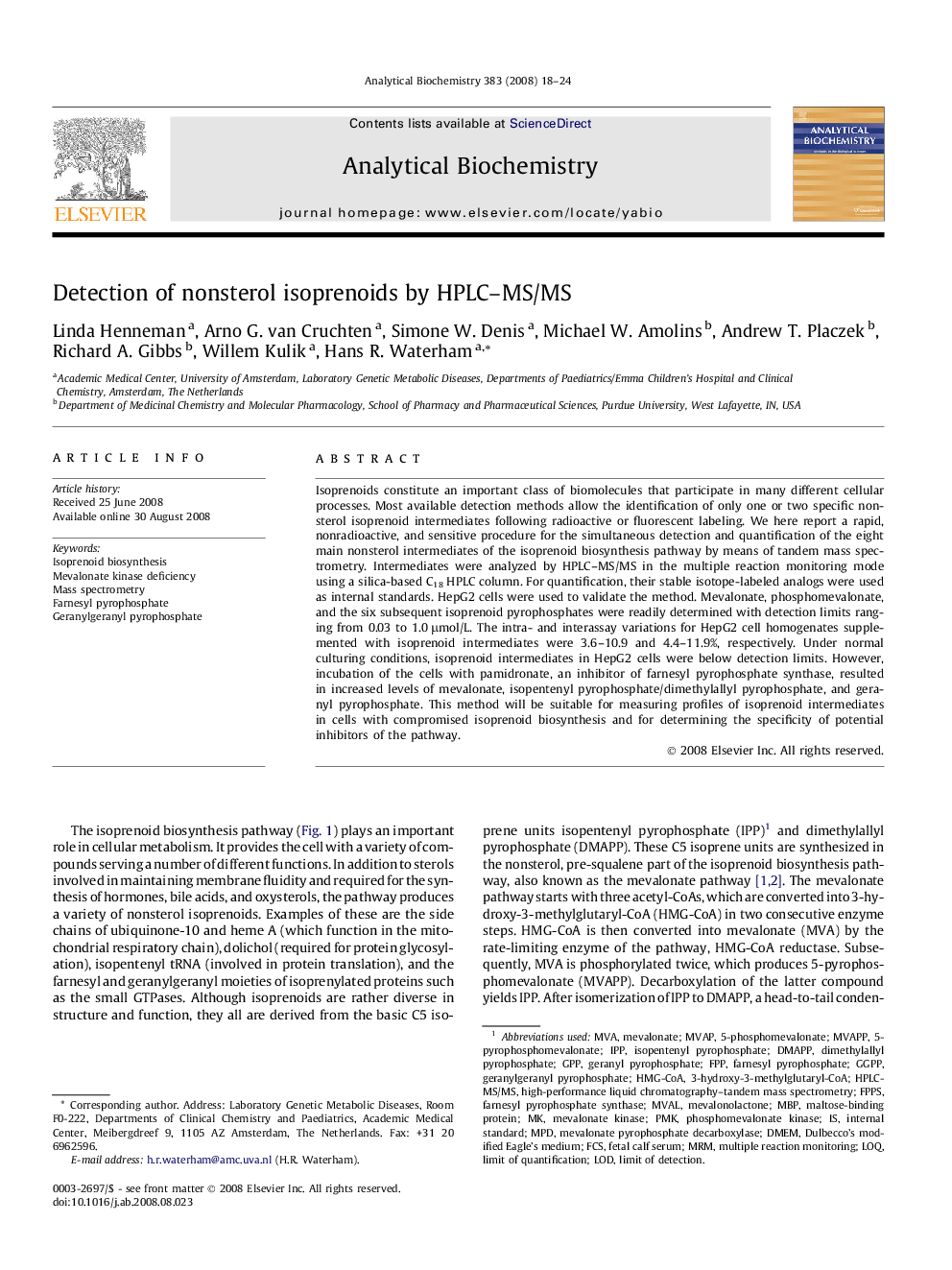| Article ID | Journal | Published Year | Pages | File Type |
|---|---|---|---|---|
| 1175123 | Analytical Biochemistry | 2008 | 7 Pages |
Isoprenoids constitute an important class of biomolecules that participate in many different cellular processes. Most available detection methods allow the identification of only one or two specific nonsterol isoprenoid intermediates following radioactive or fluorescent labeling. We here report a rapid, nonradioactive, and sensitive procedure for the simultaneous detection and quantification of the eight main nonsterol intermediates of the isoprenoid biosynthesis pathway by means of tandem mass spectrometry. Intermediates were analyzed by HPLC–MS/MS in the multiple reaction monitoring mode using a silica-based C18 HPLC column. For quantification, their stable isotope-labeled analogs were used as internal standards. HepG2 cells were used to validate the method. Mevalonate, phosphomevalonate, and the six subsequent isoprenoid pyrophosphates were readily determined with detection limits ranging from 0.03 to 1.0 μmol/L. The intra- and interassay variations for HepG2 cell homogenates supplemented with isoprenoid intermediates were 3.6–10.9 and 4.4–11.9%, respectively. Under normal culturing conditions, isoprenoid intermediates in HepG2 cells were below detection limits. However, incubation of the cells with pamidronate, an inhibitor of farnesyl pyrophosphate synthase, resulted in increased levels of mevalonate, isopentenyl pyrophosphate/dimethylallyl pyrophosphate, and geranyl pyrophosphate. This method will be suitable for measuring profiles of isoprenoid intermediates in cells with compromised isoprenoid biosynthesis and for determining the specificity of potential inhibitors of the pathway.
